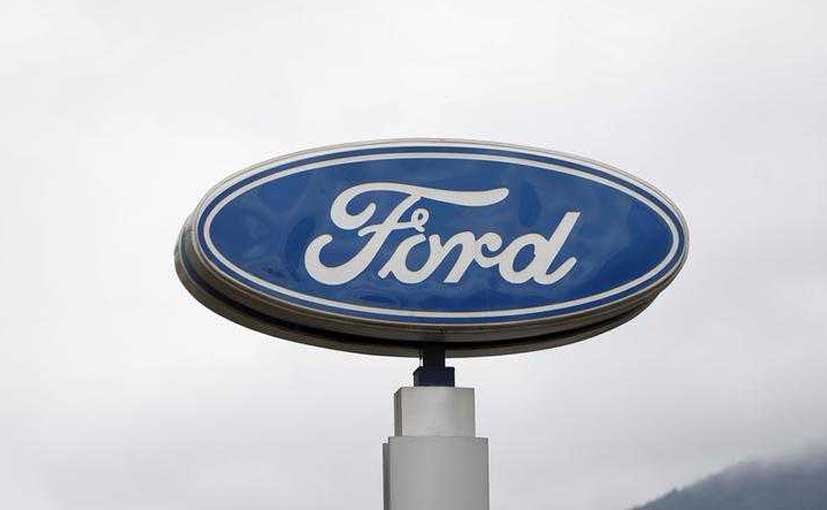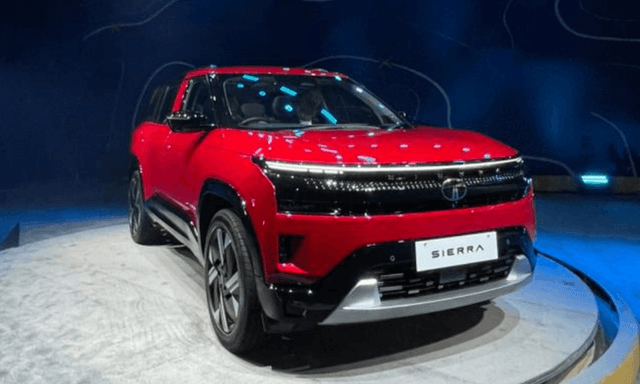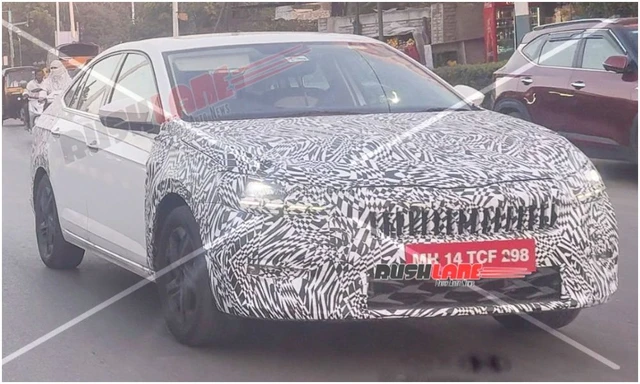Ford To Cut Costs; Invest In Trucks, Electric Cars

- Ford will develop more trucks and electric and hybrid cars
- Most of those savings will not show up until 2019 and 2020
- It could take until 2020 or later to achieve the 8 percent margin goal
Ford Motor Co plans to slash $14 billion in costs over the next five years, Chief Executive Officer Jim Hackett told investors on Tuesday, adding that the No. 2 U.S. automaker would shift capital investment away from sedans and internal combustion engines to develop more trucks and electric and hybrid cars. Most of those savings will not show up on Ford's bottom line until 2019 and 2020, Hackett and other Ford executives said, reflecting the industry's long product engineering lead times.
Also Read: Ford Announces New In-house 'Team Edison' For Electric Vehicle Development
Ford will be open to more partnerships to spread the costs and risks of simultaneously developing new technology and services while churning out profit from selling trucks and sport utility vehicles in North America, Hackett said during a nearly two-hour presentation. He cited a partnership with ride services company Lyft to deploy future Ford self-driving cars, an alliance with Indian automaker Mahindra and a potential alliance with Chinese electric vehicle maker Zotye.
The automaker reaffirmed a goal of achieving 8 percent automotive operating margins and generating returns that exceed the cost of capital. Ford will provide a financial forecast for 2018 in January. Ford Chief Financial Officer Bob Shanks said it could take until 2020 or later to achieve the 8 percent margin goal.
Also Read: Ford, Lyft Will Partner To Deploy Self-Driving Cars
Other automakers have warned that shifting to all-electric vehicles could undercut profit margins. "I don't think we should walk off a ledge where we destroy the earnings power of the company," Hackett said, saying Ford is planning for a third of vehicles to still have internal combustion engines by 2030 - the year some European governments have proposed banning petroleum fueled cars.
Hackett, former CEO of office furniture maker Steelcase Inc, took the top post at Ford in May after his predecessor Mark Fields was pushed out. At the time, Hackett promised to tell investors after 100 days how he would improve the "fitness" of Ford to compete as the auto industry becomes more digital, more electric and less wedded to selling one vehicle at a time to individuals.
Ford shares were little changed after hours as Hackett and other executives presented their outlook. Ford shares had risen 2.1 percent on Tuesday, up with other automotive stocks as the industry reported the highest sales pace in a dozen years. However, the company's share price is down 30 percent since July 2014.
Hackett has signed off on a series of moves, including a plan to shift production of Ford Focus compact cars from Michigan to China. He also hired a company outsider, Jason Luo, to lead Ford's business in China, the world's largest car market, where Ford is revamping operations and looking to expand partnerships in electric vehicles.
Also Read: 2017 Ford EcoSport Facelift: All You Need To Know
Ford is playing catch up in some areas. By 2019, Ford plans to equip all U.S. models with built-in modems and to install mobile internet connections in 90 percent of global vehicles by 2020, Hackett said.
Rival General Motors Co(GM.N) has been installing built-in mobile broadband connections in its U.S. vehicles since 2015 and now has about 7 million 4G LTE connected vehicles on the road globally, a spokesman said on Tuesday.
Of Ford's $14 billion in promised cost reductions over five years, $10 billion will come from material costs and $4 billion from reduced engineering costs, Hackett said.
"We have too much cost across our business," Hackett said.
By 2022, Ford plans to cut spending on future internal combustion engines by a third, or about $500 million, putting that money instead into expanded electric and hybrid vehicle development, on top of $4.5 billion previously announced. Ford had already promised 13 new electric or hybrid vehicles within the next five years.
Ford is "looking to build sustainably profitable BEV (battery electric vehicle) business" in segments where "we have a strong revenue presence," Jim Farley, head of global markets, told investors.
Farley also said Ford is looking "carefully" at marginally profitable or unprofitable operations in Europe and Latin America, and could look to partnerships in those markets.
Electric vehicles will mean auto factories can have a final assembly area that is half the size, requires half the capital investment and 30 percent fewer labor hours per car, said Joe Hinrichs, president of global operations.
GM on Monday said it planned to launch 20 new all-electric vehicles by 2023.
Also Read: Mahindra and Ford Enter Alliance For Product Development
One way to cut costs will be to offer fewer variations of Ford's models, Hackett said. The slow-selling Ford Fusion midsize sedan can now be ordered in 35,000 combinations of features, colors and powertrain options. The future model will come in just 96 combinations, meaning fewer parts to design, produce and store in inventory, Ford showed in a presentation.
He said Ford also will cut the time it takes to engineer a new car by 20 percent, and invest in "factories of the future" that will occupy less space and use more robots.
(Editing by David Gregorio and James Dalgleish)
(This story has not been edited by NDTV staff and is auto-generated from a syndicated feed.)
Trending News
Latest News
 Jaiveer Mehra | Dec 15, 20252026 MG Hector Facelift Launched At Rs 11.99 LakhThe latest facelift of MG’s SUV brings tweaks to the styling and cabin, along with a few new features.3 mins read
Jaiveer Mehra | Dec 15, 20252026 MG Hector Facelift Launched At Rs 11.99 LakhThe latest facelift of MG’s SUV brings tweaks to the styling and cabin, along with a few new features.3 mins read car&bike Team | Dec 14, 2025Top-Spec Tata Sierra Accomplished, Accomplished+ Prices RevealedRegardless of the powertrain combination chosen, all Tata Sierra Accomplished+ trims cost upwards of Rs 20 lakh (ex-showroom).2 mins read
car&bike Team | Dec 14, 2025Top-Spec Tata Sierra Accomplished, Accomplished+ Prices RevealedRegardless of the powertrain combination chosen, all Tata Sierra Accomplished+ trims cost upwards of Rs 20 lakh (ex-showroom).2 mins read car&bike Team | Dec 13, 2025Skoda Slavia Facelift Spied Testing Again Ahead Of DebutThe facelifted Slavia is expected to debut in 2026 as Skoda-VW India looks to refresh its India 2.0 range.1 min read
car&bike Team | Dec 13, 2025Skoda Slavia Facelift Spied Testing Again Ahead Of DebutThe facelifted Slavia is expected to debut in 2026 as Skoda-VW India looks to refresh its India 2.0 range.1 min read car&bike Team | Dec 13, 20252026 MG Hector Facelift Interior Previewed Ahead Of DebutLatest teaser video of the upcoming Hector facelift suggests minimal cosmetic changes to the interior as well as reveals a new alloy-wheel design.1 min read
car&bike Team | Dec 13, 20252026 MG Hector Facelift Interior Previewed Ahead Of DebutLatest teaser video of the upcoming Hector facelift suggests minimal cosmetic changes to the interior as well as reveals a new alloy-wheel design.1 min read Jaiveer Mehra | Dec 13, 2025Passenger Vehicle, Two-Wheeler Sales Surge In November 2025: SIAMBoth segments reported a growth in the region of 20 per cent, though year-to-date sales growth in FY2026 was notably flatter at around 3 per cent.1 min read
Jaiveer Mehra | Dec 13, 2025Passenger Vehicle, Two-Wheeler Sales Surge In November 2025: SIAMBoth segments reported a growth in the region of 20 per cent, though year-to-date sales growth in FY2026 was notably flatter at around 3 per cent.1 min read car&bike Team | Dec 12, 2025Nissan Entry MPV Design To Be Unveiled On December 18New MPV to be the first of three new models for India by Nissan, alongside the Tekton and a three-row SUV.1 min read
car&bike Team | Dec 12, 2025Nissan Entry MPV Design To Be Unveiled On December 18New MPV to be the first of three new models for India by Nissan, alongside the Tekton and a three-row SUV.1 min read
 Janak Sorap | Dec 11, 2025Harley-Davidson X440 T First Ride Review: Smarter and SharperHarley-Davidson has taken the X440 and given it a more focused and engaging twist. The result is the X440 T—essentially the same platform but updated in areas that give the motorcycle more appeal and riders more thrill.5 mins read
Janak Sorap | Dec 11, 2025Harley-Davidson X440 T First Ride Review: Smarter and SharperHarley-Davidson has taken the X440 and given it a more focused and engaging twist. The result is the X440 T—essentially the same platform but updated in areas that give the motorcycle more appeal and riders more thrill.5 mins read Shams Raza Naqvi | Dec 10, 20252025 Mini Cooper Convertible Review: More Colour On Indian RoadsThe updated Mini Cooper Convertible is set to be launched in the Indian market in the next few days. We drive it around Jaisalmer for a quick review.1 min read
Shams Raza Naqvi | Dec 10, 20252025 Mini Cooper Convertible Review: More Colour On Indian RoadsThe updated Mini Cooper Convertible is set to be launched in the Indian market in the next few days. We drive it around Jaisalmer for a quick review.1 min read Bilal Firfiray | Dec 8, 2025Tata Sierra Review: India’s New Favourite?Marking its return after a few decades, the reborn Sierra has made everyone sit up and take notice. But is it worth the hype?10 mins read
Bilal Firfiray | Dec 8, 2025Tata Sierra Review: India’s New Favourite?Marking its return after a few decades, the reborn Sierra has made everyone sit up and take notice. But is it worth the hype?10 mins read Girish Karkera | Dec 4, 20252026 Honda Prelude First Drive: Domesticated Civic Type RA sporty-looking coupe built to give customers a taste of performance but not at the expense of everyday practicality.5 mins read
Girish Karkera | Dec 4, 20252026 Honda Prelude First Drive: Domesticated Civic Type RA sporty-looking coupe built to give customers a taste of performance but not at the expense of everyday practicality.5 mins read Seshan Vijayraghvan | Nov 29, 2025Mahindra XEV 9S First Drive Review: Big Electric SUV, Bigger ExpectationsThe XEV 9S lands at a time when the EV crowd is growing fast. It’s a big, born-electric, three-row SUV that starts under 20 lakh. It sits close to the XUV700 in size, but the brief is very different. Here’s what it’s like on the road.11 mins read
Seshan Vijayraghvan | Nov 29, 2025Mahindra XEV 9S First Drive Review: Big Electric SUV, Bigger ExpectationsThe XEV 9S lands at a time when the EV crowd is growing fast. It’s a big, born-electric, three-row SUV that starts under 20 lakh. It sits close to the XUV700 in size, but the brief is very different. Here’s what it’s like on the road.11 mins read

































































































































